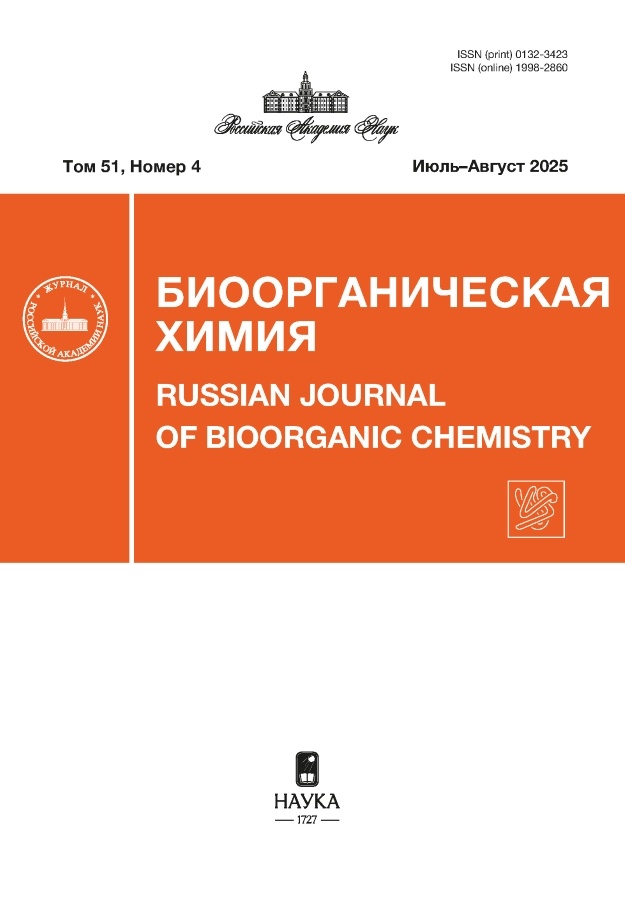Bioorganičeskaâ himiâ
The Journal was founded in 1975 by Prof. Yurii A. Ovchinnikov. The Editorial Board uses the term "bioorganic chemistry" to cover a wide range of problems related to the investigation of the structure and function of biomolecules using the methods of organic, biochemical and physical chemistry.
The journal is intended for scientists, for those in the health professions, educators, and students in universities and researchers in industrial, medical, agricultural, and environmental control laboratories.
Russian Journal of Bioorganic Chemistry (Bioorganicheskaya Khimiya) welcomes papers on all aspects of bioorganic chemistry, biochemistry, cell and molecular biology, genomics, proteomics, bioinformatics, immunology, molecular virology, molecular evolution and developmental biology.
The Journal publishes reviews, minireviews, research articles and theoretical investigations, hypothesis and short communications.
The Journal is published in Russian (under the name Bioorganicheskaya Khimiya in the Russian Federation) and in English (under the name Russian Journal
of Bioorganic Chemistry) six times a year by Russian Academy of Sciences (IKC "Akademkniga") in Moscow (Russia) and Pleiades Publishing Inc. in the United States. The English edition is distributed worldwide by Springer.
Articles are published in Russian and English. Publication of articles in the Russian Journal of Bioorganic Chemistry (Bioorganicheskaya Khimiya) – free.
Media registration certificate: № 0110214 от 08.02.1993
Edição corrente
Volume 51, Nº 4 (2025)
- Ano: 2025
- Artigos: 15
- URL: https://rjdentistry.com/0132-3423/issue/view/13922
Edição completa
Articles
BCR-ABL Inhibitors in Targeted Therapy of Chronic Myeloid Leukemia
Resumo
 547-563
547-563


Reactivity of (–)-Shikimic Acid as the Basis of Its Biological Role and a Template for the Development of Antiviral Agents: A Case Study of Oseltamivir Phosphate
Resumo
 564-580
564-580


Application of 3D Visualization in Biomedical Research
Resumo
 581-598
581-598


Integration of Software for 3D Tissue Reconstruction Based on Optical Probe Nanotomography Data
Resumo
 599-606
599-606


Synthesis of Reactive Pegylated Indocyanine Dyes
Resumo
 607-611
607-611


Solid-Phase PCR on Film Biochips with Brush Polymer Cells, "Lab-on-a-Chip"
Resumo
 612-626
612-626


C-Terminal Domain of Bacillus cereus Hemolysin II is Capable of Forming Homo- and Hetero-Oligomeric Forms of Toxin on the Membrane Surface
Resumo
 627-635
627-635


Synthesis of Tetraesters of Indolyl-3-acetic Acid with 24-Epibrassinosteroids and Their Influence on the Initial Growth of Wheat Plants
Resumo
 636-643
636-643


Pharmacokinetic Features of Ecdystene and Ursolic Acid in Plant Extracts After Oral Administration In Vivo
Resumo
 644-653
644-653


Molecular Species of Membrane Lipids of the Sea Anemone Exaiptasia diaphana and Its Symbionts
Resumo
 654-666
654-666


Synthesis and Anti-Leukemia Activity N-[1-(1-Adamantile)ethyl]-3-hydroxylup-20(29)-en-28-amide
Resumo
 667-677
667-677


Comparison of Alternative Piperidine Deblocking Agents in Solid-Phase Synthesis of Ingramon and Methylin
Resumo
 678-687
678-687


Chimeric Amides of Substituted Allyl- and Phenylcarboxylic Acids with Pharmacophore Fragments of Aromatic and Heteroaromatic Rings – Potential Multitarget Protein Kinase Inhibitors: Design, Synthesis, Determination of Antitumor Activity, and In Silico Analysis
Resumo
 688-705
688-705


Enzymatic Synthesis and Molecular Docking Studies of Substituted 5-Phenyl-1,2,4-triazole-3-thione Deoxyribosides
Resumo
 706-714
706-714


A Phenol-Free Method for the Robust Isolation of the Double-Stranded RNA Produced in the E. coli HT115 Strain
Resumo
 715-723
715-723












